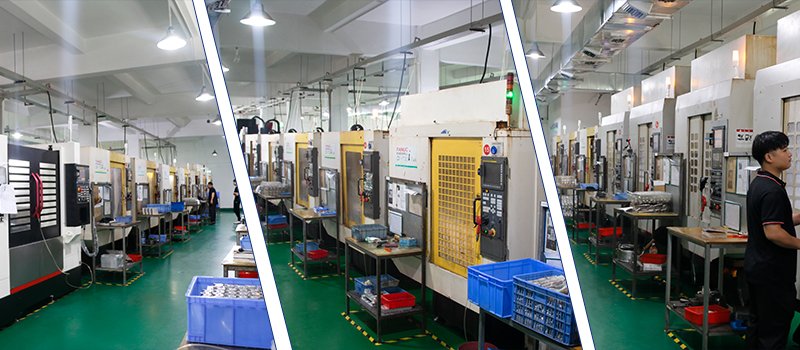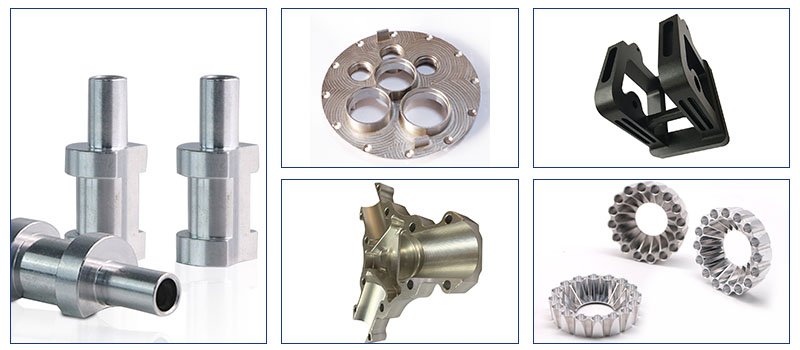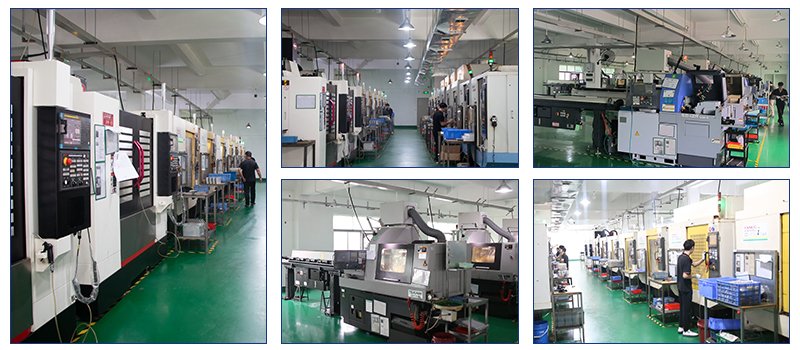When it comes to building robots, the precision and performance of each component are crucial to achieving flawless operation. Whether you’re designing industrial robots, medical robots, or automated systems, the accuracy of the parts you use can significantly impact how well the robot performs. This is where CNC (Computer Numerical Control) machining comes into play, transforming the way custom robot parts are produced.
In this article, I’ll take you through my experience with CNC machining and explain how it can improve the precision, performance, and overall quality of robot parts. Along the way, I’ll address common challenges, offer practical advice, and share insights on selecting the right CNC machining partner to help bring your robot designs to life.
What Is CNC Machining and Why Is It Important for Robot Parts?
Before diving into the specifics, let’s take a moment to understand what CNC machining is and why it’s indispensable for creating custom robot parts. Simply put, CNC machining involves the use of computer-controlled machines to precisely cut, shape, and manufacture parts based on digital designs.
This process is ideal for producing robot parts because it ensures extremely tight tolerances, complex geometries, and the ability to work with a wide range of materials. In the world of robotics, even the smallest deviation can result in operational failure. That’s why precision is paramount, and CNC machining guarantees that each part is crafted to the highest standards.
CNC Machining and Precision: Why It Matters for Robotics
In robotics, precision isn’t just a nice-to-have; it’s essential. Every part of a robot, from its structural components to its moving joints, must fit together perfectly for the robot to function correctly. Even the smallest misalignment can cause mechanical failure, slow down the process, or render the robot inoperable.
Through CNC machining, we achieve remarkable levels of accuracy. CNC machines can cut parts to within a fraction of a millimeter, ensuring that each component is produced with the utmost precision. This level of precision is critical for robot parts such as gears, actuators, and joints, where even a small discrepancy can cause malfunction or damage over time.
Imagine designing a robotic arm for an industrial task. The joints, gears, and motors need to work in perfect harmony to achieve smooth, efficient movement. Using CNC machining for these parts guarantees a perfect fit, meaning that your robot operates at its peak performance without the fear of misalignments or inaccuracies affecting its tasks.
Customization: Tailoring Robot Parts to Specific Needs
No two robots are the same. Each robot is designed to serve a specific purpose, whether it’s in manufacturing, healthcare, or research. The versatility of CNC machining is one of its greatest advantages because it allows you to customize parts for each unique application.
You may need a robot arm that’s lightweight but incredibly strong, or you may need a sensor housing that’s resistant to harsh environmental conditions. CNC machining gives you the flexibility to design parts with specific materials, shapes, and functionalities, which is especially important when dealing with complex, custom robots.
For instance, let’s say you’re working on a robot designed for underwater exploration. CNC machining can be used to create parts from corrosion-resistant materials like titanium or specialized polymers that can withstand the pressures of deep-sea environments. The ability to tailor each part precisely to your robot’s needs ensures that it operates optimally, no matter the task at hand.
Performance Improvement: How CNC Machining Boosts Efficiency and Durability
One of the key benefits of CNC machining is its ability to produce parts that not only meet tight tolerances but also improve the performance and longevity of robots. In the robotics industry, performance is closely tied to the durability and efficiency of each part. CNC machining helps improve both.
For example, robot components that are exposed to high stresses—such as robotic arms or robotic legs—require materials that are both strong and durable. CNC machining allows for the creation of parts that minimize wear and tear, reduce friction, and enhance the robot’s overall durability.
Additionally, using CNC machining for custom parts means you can optimize the design for functionality. If you need a part that operates under high torque or high-speed conditions, CNC machining ensures the part is made to withstand those conditions, improving the robot’s overall performance. With better-performing parts, robots can operate more efficiently, reducing downtime and increasing productivity.
Material Selection: How to Choose the Right Materials for CNC Machining
When working with CNC machining, one of the most important factors to consider is material selection. The material you choose for your custom robot parts directly impacts their strength, durability, and functionality. CNC machining is versatile enough to work with a wide range of materials, from metals like stainless steel and aluminum to plastics and composites.
Choosing the right material for your robot’s parts is crucial for ensuring that the robot can perform its intended tasks effectively. For example:
- Aluminum is lightweight, strong, and resistant to corrosion, making it a popular choice for parts that require high strength without added weight.
- Stainless steel offers greater strength and corrosion resistance, making it ideal for robots used in harsh environments, such as food processing or medical robotics.
- Titanium is an excellent choice for parts that need to endure high stress and temperatures, while also being lightweight and corrosion-resistant.
When I work with my clients on custom robot parts, material selection is one of the first things we focus on. The material must not only meet the strength requirements but also be cost-effective and compatible with the CNC machining process.
Reducing Lead Times and Improving Production Efficiency
In the world of robotics, time is often of the essence. When you’re building robots for specific projects or industries, you can’t afford to wait for weeks or months for parts to be manufactured. CNC machining can dramatically reduce lead times and improve production efficiency.
One of the key reasons for this is that CNC machines operate automatically, meaning that once the design is inputted, the machine can continue running without the need for constant supervision. This significantly speeds up the production process, allowing for faster prototyping, testing, and final production of custom robot parts.
Moreover, CNC machining allows for the production of parts in bulk with consistent quality. This means that if you need to scale up production, CNC machines can produce large quantities of parts without compromising on quality, saving you both time and money.
The Importance of Quality Control in CNC Machining for Robotics
Quality control is a critical aspect of CNC machining, especially when working on custom robot parts. The high standards required in robotics mean that even the smallest mistake can affect the robot’s performance. CNC machines are equipped with advanced tools that allow for precise measurement and quality control throughout the manufacturing process.
Every time a part is produced, it is carefully checked to ensure it meets the required specifications. The machine itself performs automated checks, but it’s always important to have experienced personnel overseeing the process to catch any potential issues before the part is shipped.
At yl-machining, quality control is an integral part of the CNC machining process. We use state-of-the-art equipment to inspect and verify each part, ensuring that the final product meets your exact requirements and operates flawlessly.
How to Choose the Right CNC Machining Partner for Robot Parts
Choosing the right CNC machining partner is one of the most important decisions you’ll make when designing custom robot parts. The ideal partner will not only have the technical expertise to handle your project but also the ability to collaborate with you throughout the entire process, from design to final production.
When looking for a CNC machining provider, here are a few factors to consider:
- Experience with robotics: Look for a company that has experience in creating custom robot parts. They will understand the unique challenges and requirements of the robotics industry.
- Material options: Ensure the CNC provider can work with the specific materials you need for your parts.
- Capacity: Consider whether the company can handle your production volume, whether it’s a small batch for prototyping or large-scale production.
- Customer service: Good communication is key. Choose a provider that is responsive and easy to work with, ensuring smooth project management.
At yl-machining, we specialize in custom CNC machining for robot parts, offering tailored solutions for every need. Whether you’re working on a one-off prototype or need a large batch of parts, we’ve got the expertise and capacity to deliver high-quality results on time.
Conclusion: The Future of Robotics with CNC Machining
CNC machining is revolutionizing the way we create robot parts, allowing for the precise manufacturing of custom components that enhance the performance, durability, and efficiency of robots. By leveraging CNC technology, you can build robots that are not only more capable but also more reliable, giving you a competitive edge in the ever-evolving robotics industry.
If you’re looking to take your robot designs to the next level, consider CNC machining for your custom parts. With its precision, flexibility, and efficiency, CNC machining is the ideal solution to help you build the next generation of robots.
Are you ready to enhance the performance of your robots? Get in touch with a trusted CNC machining provider like yl-machining, and let’s start creating the custom parts that will power your robot’s success.







